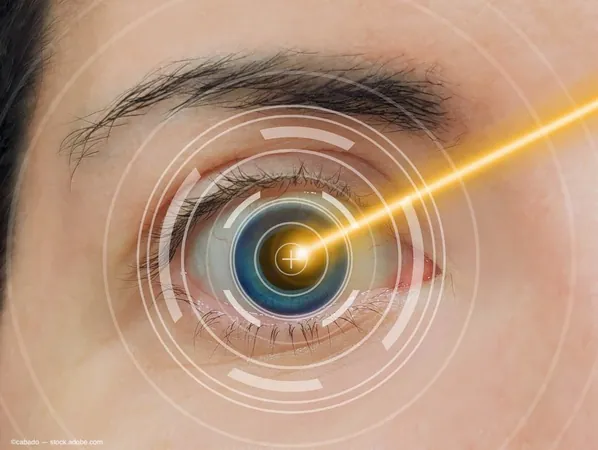
Revolutionary Laser Technology Transforms Eye Treatment: First Impressions from the LYNX Pattern Laser
2025-06-15
Author: Wei Ling
Groundbreaking Advances in Eye Care
Dr. Nassim Abreu has unveiled striking initial results using the innovative LYNX pattern laser indirect ophthalmoscope (LIO) during the Retina World Congress in Fort Lauderdale, FL. Designed for panretinal photocoagulation (PRP), this cutting-edge device promises to revolutionize treatment in the ophthalmology field.
The Future of Laser Technology
The LYNX LIO represents the latest evolution in pattern scanning lasers, a concept introduced over a decade ago. Unlike traditional lasers where movements are constrained, the LYNX allows flexible interaction among the lens, the eye, and the laser beam, enabling unprecedented adaptability during procedures. Dr. Abreu, an associate professor at the Retina Department of Elias Santana Hospital in the Dominican Republic, highlighted these advancements.
Trial Breakdown: A Closer Look
In a focused study involving 10 patients at Elias Santana Hospital, Dr. Abreu observed the performance of the LYNX laser. A remarkable eight out of the ten individuals were battling proliferative diabetic retinopathy (PDR), while the remaining two faced central retinal vein occlusion. All patients received bilateral laser treatment in a single session.
Impressive Results and Efficiency
The findings were impressive: the average treatment time clocked in at just 16 minutes and 43 seconds, with individual eye treatments averaging 8 minutes and 6 seconds. In a standout performance, one PDR patient received treatment in under 7 minutes!
Next-Level Precision in Treatment
Participants received a remarkable mean of 3,489 laser spots each, translating to 1,710 spots per eye. The laser parameters varied significantly, with powers ranging from 200 to 400 mW and interval times between 500 and 750 ms. Different grid sizes allowed for tailored treatments, enhancing outcomes.
Success Across the Board
All ten patients reported successful treatment with minimal discomfort, with only two experiencing mild pain. The data gathered aligns with existing literature, cementing the LYNX LIO's potential in providing effective PRP treatments. Importantly, using a 3 x 3 grid with optimally spaced spots led to more organized results with minimal overlap, showcasing the technology's efficiency.
A Promising Future in Ophthalmology
This initial experience suggests that the LYNX pattern laser could significantly enhance patient care, offering shorter treatment times and improved outcomes. As Dr. Abreu concludes, the adaptability and precision of this technology could set a new standard in ocular therapy, marking a thrilling step forward in eye care.



 Brasil (PT)
Brasil (PT)
 Canada (EN)
Canada (EN)
 Chile (ES)
Chile (ES)
 Česko (CS)
Česko (CS)
 대한민국 (KO)
대한민국 (KO)
 España (ES)
España (ES)
 France (FR)
France (FR)
 Hong Kong (EN)
Hong Kong (EN)
 Italia (IT)
Italia (IT)
 日本 (JA)
日本 (JA)
 Magyarország (HU)
Magyarország (HU)
 Norge (NO)
Norge (NO)
 Polska (PL)
Polska (PL)
 Schweiz (DE)
Schweiz (DE)
 Singapore (EN)
Singapore (EN)
 Sverige (SV)
Sverige (SV)
 Suomi (FI)
Suomi (FI)
 Türkiye (TR)
Türkiye (TR)
 الإمارات العربية المتحدة (AR)
الإمارات العربية المتحدة (AR)